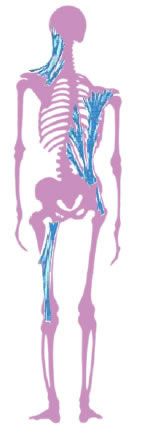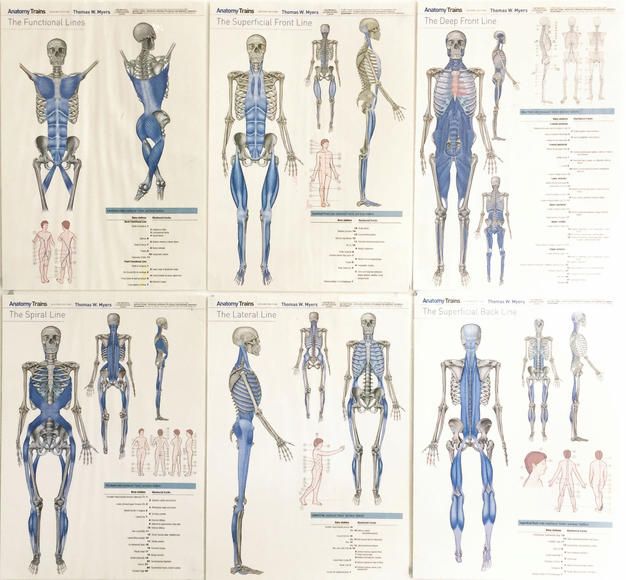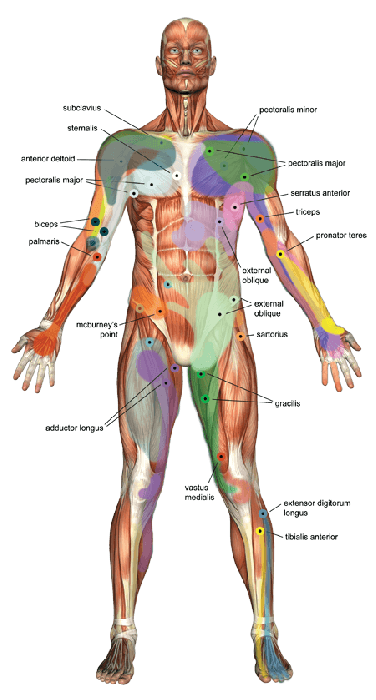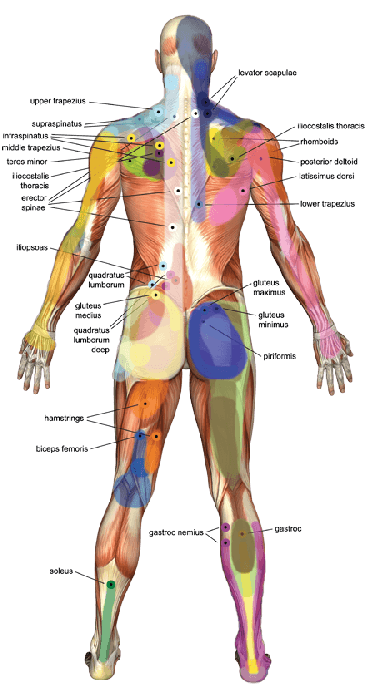Fascia

The inside of the body is covered with soft tissue called fascia.
Fascia is a specialized system of the body that has an appearance similar to a spider's web or a sweater. Fascia is very densely woven, covering and interpenetrating every muscle, bone, nerve, artery and vein, as well as, all of our internal organs including the heart, lungs, brain and spinal cord.

The most interesting aspect of the fascial system is that it is not just a system of separate coverings. It is actually one continuous structure that exists from head to toe without interruption. In this way you can begin to see that each part of the entire body is connected to every other part by the fascia, like the yarn in a sweater.

Trauma, inflammatory responses, and/or surgical procedures create Myofascial restrictions that can produce tensile pressures of approximately 2,000 pounds per square inch on pain sensitive structures that do not show up in many of the standard tests (x-rays, myelograms, CAT scans, electromyography, etc.) A high percentage of people suffering with pain and/or lack of motion may be having fascial problems, but are not diagnosed.
Fascia plays an important role in the support and function of our bodies, since it surrounds and attaches to all structures. In the normal healthy state, the fascia is relaxed and wavy in configuration.

It has the ability to stretch and move without restriction. When one experiences physical trauma, emotional trauma, scarring, or inflammation, however, the fascia loses its pliability. It becomes tight, restricted, and a source of tension to the rest of the body. Trauma, such as a fall, car accident, whiplash, surgery or just habitual poor posture and repetitive stress injuries has cumulative effects on the body. The changes trauma causes in the fascial system influences comfort and function of our body.
Fascial restrictions can exert excessive pressure causing all kinds of symptoms producing pain, headaches or restriction of motion. Fascial restrictions affect our flexibility and stability, and are a determining factor in our ability to withstand stress and perform daily activities.

An image of how fascial restrictions can affect the posture over time.

The fascia that covers you muscles is called myofascia.

When the myofascia is stressed from overuse or trauma it can tear and adhere together.
These adhesions are called " trigger points" and can prevent the muscles from working well.
Trigger points lead to an increase in muscle stiffness and tenderness and a decrease in range-of-motion. In addition, the discomfort from trigger points can radiate from the adhesion. This is called referral pain and the most common pathways are shown on the images below.

